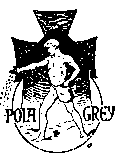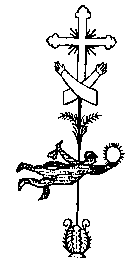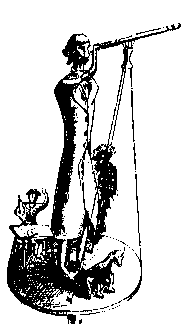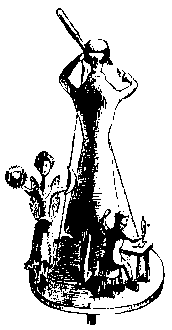Nota de editor:
Devido à existência de inconsistências nomeadamente relativas à numeração das imagens,
foram tomadas várias decisões quanto à versão final.
As decisões encontram-se descritas no fim desta obra.
Rita
Farinha (Julho 2015)
PORTVGALIA
MATERIAES PARA O ESTUDO DO POVO PORTUGUEZ
SEPARATA DO TOMO II, FASCICULO 3
Rocha Peixoto
OS CATAVENTOS
COM QUARENTA E SEIS ILLUSTRAÇÕES NO TEXTO

PORTO
IMPRENSA PORTUGUESA
112—Rua Formosa—112
1907
PORTVGALIA
MATERIAES PARA O ESTUDO DO POVO PORTUGUEZ
SEPARATA DO TOMO II, FASCICULO 3
Rocha Peixoto
OS CATAVENTOS
COM QUARENTA E SEIS ILLUSTRAÇÕES NO TEXTO

PORTO
IMPRENSA PORTUGUESA
112—Rua Formosa—112
1907
OS CATAVENTOS
Na meteorologia popular prognostica-se ácerca dos doze mezes do anno conforme os aspectos dos primeiros doze dias de janeiro; ou presume-se pelo vento que soprar á meia noire no dia da Senhora das Candeias, 2 de fevereiro, o vento dominante durante o resto do anno; ou conclue-se pela agitação atmospherica n'umas temporas d'onde prevalecerá o meteoro até ás seguintes; ou ainda mais restrictamente se avalía pelo vento do dia de S. Miguel, 29 de setembro, o estado do inverno que se approxima; ou, por ultimo,se infere da direcção observada á uma hora da tarde do dia da Senhora da Ascenção qual o vento estival de predominio. A verdade, porém, é que isto se caticina e mal se admitte. Alguns adagios contradictam logo os prenuncios, pois
| Quando deus queria, Do Norte chovia. |
Quando Deus quer, com todos os ventos chove. | Vento e ventura, Pouco dura. |
 |
 |
 |
Figs. 1 a 3
De mais firmesa é a illação diaria tirada dos aspectos celestes, associados frequentemente a relações com a ondulação orographica local. «Vem ahi o trovão», diz-se no planalto de Barroso ao observarem-se as formas de certas nuvens e a orientação da sua marcha. E a trovoada, ás vezes diaria no estio, em breve surge. No Soajo, formando-se ellas na portella de Tibo, apenas se «esbarram» em vento; mas levantando-se uns «penduricalhos» no rio, sitio do Cachão, e quando o castello da Nobrega «tem carapuça» irrompe a chuva. O mesmo succede em Castro Laboreiro quando as nuvens «fazem chapeu» lá para os montes do Gerez; e em Rebordãos, nas abas da serra da Nogueira, se «está o buraco tapado», ou sejam as nuvens ao nascente, a agoa é certa. Entretanto, como se diz no Soajo:
Chuvas de verão,
É como amores em vão.
É como amores em vão.
A «maré pica de cima» ou a «maré pica de baixo» são as formulas com que ordinariamente se distinguem os ventos norte e sul que annunciam bom ou mau tempo. [4] Todavia, e em regra, quando o vento do sul é forte, a chuva não se prolonga tanto como se é mais brando do mesmo quadrante (Castro Laboreiro).
Outras previsões fundamentadas em varios aspectos de nuvens, do orvalho e circumstancias, logares e horas em que se mostra, de attitudes dos aninmaes e até da agoa das fontes, asseguram nevoeiro ou chuvas proximas, os trovões ou as nevadas.
 |
 |
 |
Figs. 4 a 6
E mais quando os trabalhadores seccam as mãos e não se agarram aos cabos das enxadas é signal de chuva, como é de trovoada, pela tarde, quando, na faina do centeio, a palha tem difficuldade em guardar o grão e se resente da humidade (Castro Laboreiro).
 |
 |
 |
 |
Figs. 7 a 10
Decerto que com alguns d'estes e outros prognosticos nem sempre condiz a realidade ulterior dos factos. Mas em muitos a experiencia assegura a certesa, tanta e precisa como a tem o aldeão, e o serrano principalmente, quando se orienta. Assim, pelos cumes dos montes descobertos se guiam, como pela altura do sol calculam a hora e ainda pela direcção e extensão da sombra (Barroso). Depois do dia governa-os o sete-estrello e por elle sabem se a noite vae alta (Nogueira, Barroso, Laboreiro). Se pela tarde, emtanto, ha muito nevoeiro, é o orvalho que os esclarece sobre a approximação da noite. «Já lóze o orvalho», isto é, já luz e portanto a noite chega (Castro Laboreiro). Só quando o camasso ou camada de neve é tal que tudo é branco (Barroso) os mais sabidos se perdem nos caminhos; os homens enterram-se até aos joelhos; os gados [5] não podem marchar, sequer para irem beber; e, na serra das Alturas, não é possivel mesmo sahir por um e por dois mezes.

 Figs. 11 a 12 |
Ainda outro impedimento de orientação, mas mais ephemero, vem com a nevoa. Ha a esperar que se dissipe. E entretanto afugentam-a com esconjuros, com formulas rimadas. Em Meirinhos, no concelho de Mogadouro, os rapazes, quando pela manhã a olham, increpam-a e mandam-a para a Villariça: |
Névoínha peidorreira,
Vae para os cantos da ribeira,
Que está lá uma porca parida com leitões.
Come-lhe os leitões,
E manda a porca para os berrões.
Vae para os cantos da ribeira,
Que está lá uma porca parida com leitões.
Come-lhe os leitões,
E manda a porca para os berrões.
| As grimpas, emtanto, sempre que as ha, são naturalmente observadas, uma vez que este simples apparelho, limitado frequentemente a uma bandeirola movendo-se em torno d'um eixo vertical, indica a direcção do vento e, derivativamente, certos estados atmosphericos. Rara é a torre que não remata em veleta. De dia, pois, e sem nevoa, a freguesia tem na séde o instrumento que logo a elucida, mais ou menos grosseiramente, sobre o tempo provavel. | 
 Figs. 13 a 14 |

 Figs. 15 a 16 |
Este apparelho, a um tempo orientador e ornamental, procede da alta edade-media tendo sido a principio um signal de nobresa[1] e portanto um privilegio senhorial[2]. Além das edificações nobilitarias, só tinham direito a exhibil-as as construções ecclesiasticas. De sorte que figuravam muitas vezes as armas do mosteiro e do senhor em recorte na chapa, pintadas ainda e douradas, ou outros symbolos da heraldica, como corôas e leões rompantes. Nos seculos XIV e XV as grimpas convertem-se em verdadeiros ornamentos. E como desde os fins do seculo XI a torre, depois de ter sido uma fortificação que protegia a egreja, comece a prestar-se ás funcções se multipliquem com uma liberdade cheia de phantasia, tornando-se um poderoso instrumento de decoração e de orgulho para cathedraes e mosteiros[3], [6] as proprias ornamentações dos remates mais se acuminam e alindam. Umas vezes a decoração exclue a ventoínha e apenas consiste em combinações de folhas e flores, aves e outra fauna de imaginação, figuras humanas e cupidos, de loiça, ferro, chumbo ou zinco e do mesmo passo notaveis pela belleza de execução e graça[4]. É a estes ornamentos em ponta que correspondem, nos monumentos arabes, as terminações aceradas que um crescente fecha[5]. As mais das vezes, porém a veleta apparece sob a forma de monstros alados, dragões e animaes phantasticos[6], do archanjo S. Miguel, anjos e navios[7], do gallo principalmente[8], tudo mais ou menos historiado [7] e até, da Renascença ao seculo XVII, com a assignatura ou inspiração d'um artista emerito[9]. |
 |
 |
 |
Figs. 17 a 19
 |
 |
 |
 |
Figs. 20 a 23
 |
 |
 |
 |
Figs. 24 a 27
 |
 |
 |
Figs. 28 e 29
  Figs. 30 e 31 |
A serralheria portuguesa concorreu tambem, com a humildade caracteristica da industria popular nacional, para a indigente ornamentação dos acumes das torres e, mais restrictamente, de castellos, de pharoes, de pelourinhos (Rates), de chafarizes (Barcellos), de moínhos, de telhados, de chaminés (Alemtejo) e até d'um mastro ou varo ao alto, em campos e quintaes. Dominam, todavia, as de ferro nas egrejas. A flecha, designadamente adstricta a indicar o rumo do vento, é simples, associada a folhagens, á cruz e á esphera armillar, recortada outras vezes e até modificada na sua configuração habitual, substituindo-se por um sol a massa posterior e mais pesada. São exemplos as que se vêem em muitas habitações particulares (fig. 1), a do convento dos dominicos de Amarante (fig. 2) e a do santuario da Senhora da Abbadia (fig. 3). [8] A combinação da bandeirola e da flecha é patente na egreja de S. Victor, em Braga (fig. 4), pois a bandeira apenas, como as de Santo Thyrso, de Moreira da Maia, de Santo Ildefonso, no Porto, da Alcaçova, em Montemór-o-Velho, de Travanca (fig. 5) e da capella do Bom Despacho, em Ancêde (fig. 6), são menos communs na singelesa dos seus breves recortes. A regra é accusarem a suggestão da flecha, como a do pelourinho de Rates (fig. 7), a do Carmo de Braga (fig. 8), a da capella da Senhora da Graça de Villa Cahiz (fig. 9) e a do mosteiro de Refojos do Lima (fig. 10). E a desfiguração d'esse elemento sempre transparece, aliás, em exemplares como a da casa particular do Trasladario, nos Arcos de Val de Vez (fig. 11), ess'outra dos Arcos (fig. 12), a de Santo Antonio dos Frades, em Ponte do Lima (fig. 13), a do Populo, em Braga (fig. 14), a da Misericordia de Amarante (fig. 15) e a da matriz de Ancêde, em Baião (fig. 16). Com os mesmos accessorios da cruz e da esphera armillar, mas mais historiadas e accrescidas, são as da egreja do Espirito Santo, nos Arcos de Val de Vez (fig. 17), e a da capella de S. João do Souto, em Braga (fig. 18)[10]. A do Oratorio da Senhora da Saude das Carvalheiras, n'esta ultima cidade (fig. 19), é apenas uma interessante substituição pelos cravos e a corôa de espinhos. |

Fig. 33
Tam frequente é ainda o gallo, symbolo da vigilancia, vulgarissimo nas torres das numerosas egrejas christãs[11], e já empregado de datas longinquas[12]. Alguns mesmo assumiam proporções grandiosas: o da torre da Ajuda, cuja veleta de bronze attingia 31 palmos de alto, media 18 do bico á cauda[13]! Nas casas particulares ou seus annexos [9] (fig. 20), em Cedofeita e Carmo, no Porto, nas matrises da Trofa, de Ponte do Lima, da Campeã (fig. 21) e de Castro Laboreiro (fig. 22), na egreja da Senhora das Dôres, da Povoa de Varzim (fig. 23), na Lapa, em Braga (fig. 24) e em outras e innumeraveis torres e campanarios, o gallo apparece, ou associado simplesmente á cruz ou a folhagens e emblemas ornamentaes. Outras aves raramente pretextarão o ornato accessorio das grimpas, como o caso das duas geminadas no Seminario de Braga (fig. 25), ou então o papel exclusivamente decorativo do admiravel pelicano de bronze da Sé de Vizeu, inicialmente estante de côro, e durante muito tempo adaptado, depois de mutilado, a uma torre da cathedral, por cima do sino do relogio[14]!Da fauna ha ainda os peixes, principalmente nas povoações da beira-mar (Mattosinhos, Santa Cruz do Bispo, Lavra, etc.), os leões mais ou menos barbaros como o da egreja de Pico de Regalados (fig. 26) e os dragos da fauna mythica, como o do mosteiro de Santa Maria de Bouro (fig. 27), já de remota concepção e uso[15].
A iconographia dos anjos é mais vasta e variada em pormenores. Vêem-se com a mitra e o baculo no hospital de S. Marcos de Braga (fig. 28), com o calice em Guimarães, com o sol na matriz de Fão e na egreja de S. Francisco, em Ponte do Lima (fig. 29), com a tuba em S. Bento, no Porto, e em S. Martinho de Gallegos, junto a Barcellos, com outros emblemas em S. Paio, nos Arcos (fig. 30), com arco e setta na egreja de S. Domingos, em Amarante (fig. 31), com a espada em Guimarães e no santuario do Allivio, em Soutello, e com o gladio ondeante na matriz de Monsão. Este motivo decoral, de execução mais difficil, é tambem dos mais generalisados nos templos christãos; e occorre relembrar o celebre anjo de ouro do campanario de S. Marcos, em Veneza, esculptura de madeira de 5 metros de alto, revestida de chapas de bronze dourado e inaugurada solemnemente como catavento no primeiro quartel do seculo XVI[16].
Veem por ultimo, e d'ordinario na habitação privada, outras figuras alheias aos themas convencionaes, como o homem sobre um sol e que consulta os astros, n'uma casa da Povoa de Varzim (fig. 32), o homem que [10] maneja um alfange, o miliciano que aponta uma espingarda, o cavalleiro que galopa, o cavalleiro que peleja (Povoa de Lanhoso), outras mais.
De toda esta obra de serralheria só excepcionalmente se aparta uma grimpa mas interessante de concepção e realisação, como as já alludidas de S. João do Souto, de Monsão e de Bouro e ainda a agradavel cruz ornamentada de Santa Eugenia de Rio Côvo, perto de Barcellos. No norte, como no sul[17], as veletas e outra obra artistica de ferro manifestam vivamente a subalternidade portuguesa ante a sumptuosa variedade e merito artistico da obra similar hespanhola.
Entretanto não se limitam ás grimpas os pequenos instrumentos de engenho popular accionados pelas correntes aereas. Ha-os que são exclusivamente decorativos; outros destinam-se a afugentar as aves que assaltam os fructos; outros ainda são ventoínhas reguladoras, mais ou menos. Um muito interessante pela simplicidade, graça e utilisação d'um recurso commum e local é a especie de anemometro executado com duas varas em cruz, rematando cada extremidade com a valva concava d'um lamellibranchio do Gen. Pecten, o P. maximus, L. (fig. 33). Usam-o em varias freguesias do concelho da Povos de Varzim, como Amorim (Abremar), Beiriz e Terroso, dando assim ás conchas uma das varias applicações, ou ornamentaes ou utilitarias, já conhecidas[18].
Na mesma região até uma canna, com um velho retalho de sola figurando de bandeira, serve de catavento. O modelo, porém, mais geral é o denominado ventiéla (fig. 34) commum não só em todo o concelho, mas ainda n'outros e com ligeiras alterações constructivas, como em Bouças, por exemplo (fig. 35).
Annexando á ventiéla uma velha vasilha de folha de ferro e duas pedritas suspensas por fios do eixo movel, de sorte a percutirem repetidamente a lata quando o apparelho está em movimento, temos o catavento, corta-vento ou bate-bate que afugenta a passarda das figueiras e das vinhas. É a taraméla de Ponte do Lima (fig. 36), a tarabella de Lindoso e Miranda, a cacaréla de Melgaço, o ratatau e catraméla de Santa Martha de Penaguião, a ralhadeira do Soajo, o batedor de Barroso, o rigibó ou ruge-ruge de Cabeceiras e do Arco de Baúlhe (fig. 37), um modelo geral, emfim, com estas designações ou outras, empregado em quasi todo o paiz para semelhante destino—como, para a defesa dos ervilhaes, o casaco, as calças e chapeu velhos suspensos de dois paus em cruz e formando o geralmente denominado espantalho.
[11] A designação barrosã de batedor applica-se, aliás, em Lindoso a outro engenho com intuitos semelhantes, ou sejam de espantar a beadilha—bichos bravos, como o texugo e a raposa—mas em que o vento não interfere. É uma caixa de madeira disposta sob um veio de agoa que vem d'alto. Ao fundo addiciona-se-lhe uma longa taboa que remata por um mascôto e cujo peso, quando a caixa está vasia, inclina esta para a frente. Enchendo-se de fluído, o recinto então pesa mais, ergue-se veloz e logo verte e se esvasía. Volve, pois, á posição inicial, isto é, inclinando-se para o lado do mascôto; e ao voltar este bate rijamente n'uma taboa sobjacente. São estas pancadas successivas e espaçadas que amedrontam e afastam a bicharia.
A intenção ornamental determina a adopção d'outros brinquedos em que do vento apenas se deseja motricidade, sem nada inquirir do rumo em que caminha. São as flammulas e bandeiras dos coruchos ou cupulas das moreias (Ponte da Barca, Barcelos, etc.), associadas frequentemente a cruzes floreadas, a estrellas, a arcos de festas, e ás vezes mesmo ao pucaro invertido que corôa as mêdas (Maia, Bouças, Porto, etc.); são as reducções dos moínhos de vento (fig. 38) com os mesmos pannos e varaes, em logares, como Laundos e Terroso, no concelho da Povoa de Varzim, onde funccionam estas rudimentares estancias de moagem; são os curiosos bonecos de madeira que se veem nas hortas, jardins e campos desde Barcellos e Povoa de Varzim até á Maia e parte do concelho de Bouças. O exame das figuras, todas pintadas a côres vivas, logo indica como se effectua o andamento (figs. 39 a 42). Outr'ora, em Azurara, raro era o quintal que não possuía uma ventoínha figurada, em regra esculpida por marujos em descanço. E em alguns casos, que hoje só por acaso se observam na area dita, em vez d'uma figura havia muitas, peões e cavalleiros batalhando sobre uma circumferencia com cerca d'um metro de diametro.
Ainda um barco, com a cordoalha de arame e as vélas de tecido de algodão (fig. 43) estava organisado e orientado de sorte (Povoa de Varzim) a realisar movimentos que imitavam [12] a marcha d'uma nave. Mas já outra esculptura immovel, do mesmo habilidoso, apenas manifestava, a seu modo, um symbolismo: era um saragoçano em face do tripé que sustentava o oculo de alcance e inquirição; á frente o cão fiel; a um lado um anjo inspirador, sustentando nas mãos os astros sobre cuja influencia incidiam as observações do astrologo, atraz, e a uma meza, o secretario que registava as observações e os algarismos (figs. 44 e 45).

Fig. 46
Como arte popular esta esulptura lembra os brutescos que os ceramistas de Aveiro fabricavam para ornamento dos telhados. Apenas os esculpidos e levantados para ventoínhas teem sobre aquelles o interesse do movimento.Ora nem só as creanças, com os seus corrupios e gregorios (fig. 46), se apropriam do vento como agente do brinquedo: tambem o homem, independentemente da utilidade orientadora do engenho, edifica grimpas e cataventos que o mesmo motor faz trabalhar para seu regalo esthetico—bem limitado, em verdade!
Porto. Janeiro, 1907.

Notas:
[1] Viollet-le-Duc,
Dict. raisonné de l'architecture française du X au XVI siècle, VI, voc.
Girouette, pags. 28-9. Bauce ed. Paris, 1863.
[2] Camille Enlart, Manuel d'archéologie française depuis les temps mérovingiens jusqu'à la Renaissance, II, Architecture civile et militaire, pag. 177. A. Picard ed. Paris. 1904.
[3] Louis Gonse, L'art gothique, pags. 110-1. Quantin ed. Paris, s. d.—André Michel, Histoire de l'Art, capitulo de Camile Enlart, L'architecture romane, I, 2.ª parte, pags. 450-2. A. Colin ed. Paris, 1905.
[4] Henry Havard, Dict. de l'ameublement et de la décoration depuis le XIIIe siècle jusqu'à nos jours, II, voc. Épi, pags. 503-4 e figs. 339 a 342. Quantin ed. Paris, s. d.—Viollet-le-Duc, ob. cit., V, mesmo voc., pags. 271-87.
[5] Prisse d'Avennes, L'art arabe d'après les monuments du Kaire. Morel & C.ie eds. Paris, 1877.
[6] Havard, ob. cit., voc. Girouette, pag. 1099.—Viollet-le-Duc, ob. cit., VI, voc. Croix, pag. 427.
[7] Enlart, Manuel cit., pag. cit.
[8] Viollet-le-Duc, ob. cit., VI, voc. Croix, pag. cit., e voc. Coq, pags. 305-6.
[9] Havard, ob. cit., voc. Girouette, pag. 1100.
[10] Pela distancia e situação do desenhista em relação ao objecto esboçado, algumas das grimpas figuradas não apresentam o rigor de perspectiva nem a minucia de pormenor que os embaraços accusados explicam.
[11] Viollet-le-Duc, ob. cit., VI, voc. Coq, pag. 306.—Paul Sébillot, Les travaux publics et les mines dans les traditions et les superstitons de tous de pays, pag. 383. Rothschild ed. Paris, 1894.
[12] Viollet-le-Duc, ob. cit., VI, voc. Croix, pag. 432.
[13] Ribeiro Guimarães, Summario de varia historia, V, pag. 175. Rolland & Semiond eds. Lisboa, 1875.
[14] Filippe Simões, A Exposição retrospectiva de arte ornamental portugueza e hespanhola em Lisboa, pag. 78. Typ. Universal. Lisboa, 1882.
[15] Havard, ob. cit., II, voc. Girouette, pag. 1099.—Enlart, Manuel cit., II, pag. 177.
[16] Gabriel Pereira, O Campanario de S. Marcos, in Bol. da R. Assoc. dos architectos civis e archeologos portuguezes, serie IV, fasc. 5.º, pag. 32. Lisboa, 1902.
[17] Gabriel Pereira, Estudos eborenses, fasc. VII, pag. 25. Minerva eborense. Evora, 1886.
[18] Rocha Peixoto, Notas sobre a malacologia popular, in Revista de Sciencias Naturaes e Sociaes, I, pags. 75-90. Porto, 1890.
[2] Camille Enlart, Manuel d'archéologie française depuis les temps mérovingiens jusqu'à la Renaissance, II, Architecture civile et militaire, pag. 177. A. Picard ed. Paris. 1904.
[3] Louis Gonse, L'art gothique, pags. 110-1. Quantin ed. Paris, s. d.—André Michel, Histoire de l'Art, capitulo de Camile Enlart, L'architecture romane, I, 2.ª parte, pags. 450-2. A. Colin ed. Paris, 1905.
[4] Henry Havard, Dict. de l'ameublement et de la décoration depuis le XIIIe siècle jusqu'à nos jours, II, voc. Épi, pags. 503-4 e figs. 339 a 342. Quantin ed. Paris, s. d.—Viollet-le-Duc, ob. cit., V, mesmo voc., pags. 271-87.
[5] Prisse d'Avennes, L'art arabe d'après les monuments du Kaire. Morel & C.ie eds. Paris, 1877.
[6] Havard, ob. cit., voc. Girouette, pag. 1099.—Viollet-le-Duc, ob. cit., VI, voc. Croix, pag. 427.
[7] Enlart, Manuel cit., pag. cit.
[8] Viollet-le-Duc, ob. cit., VI, voc. Croix, pag. cit., e voc. Coq, pags. 305-6.
[9] Havard, ob. cit., voc. Girouette, pag. 1100.
[10] Pela distancia e situação do desenhista em relação ao objecto esboçado, algumas das grimpas figuradas não apresentam o rigor de perspectiva nem a minucia de pormenor que os embaraços accusados explicam.
[11] Viollet-le-Duc, ob. cit., VI, voc. Coq, pag. 306.—Paul Sébillot, Les travaux publics et les mines dans les traditions et les superstitons de tous de pays, pag. 383. Rothschild ed. Paris, 1894.
[12] Viollet-le-Duc, ob. cit., VI, voc. Croix, pag. 432.
[13] Ribeiro Guimarães, Summario de varia historia, V, pag. 175. Rolland & Semiond eds. Lisboa, 1875.
[14] Filippe Simões, A Exposição retrospectiva de arte ornamental portugueza e hespanhola em Lisboa, pag. 78. Typ. Universal. Lisboa, 1882.
[15] Havard, ob. cit., II, voc. Girouette, pag. 1099.—Enlart, Manuel cit., II, pag. 177.
[16] Gabriel Pereira, O Campanario de S. Marcos, in Bol. da R. Assoc. dos architectos civis e archeologos portuguezes, serie IV, fasc. 5.º, pag. 32. Lisboa, 1902.
[17] Gabriel Pereira, Estudos eborenses, fasc. VII, pag. 25. Minerva eborense. Evora, 1886.
[18] Rocha Peixoto, Notas sobre a malacologia popular, in Revista de Sciencias Naturaes e Sociaes, I, pags. 75-90. Porto, 1890.
Lista de decisões efectuadas
Aqui encontram-se listadas as decisões tomadas em momentos menos
claros da revisão desta obra:
A partir da fig. 29 existe um desfasamento na numeração das imagens.
Mantivemos essa discrepância devido às diversas referências às figuras que se encontram
ao longo do texto, podendo a sua renomeação alterar a relação pretendida pelo autor.
Mantivemos essa discrepância devido às diversas referências às figuras que se encontram
ao longo do texto, podendo a sua renomeação alterar a relação pretendida pelo autor.












